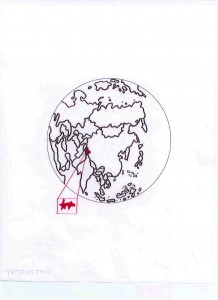TAJIKISTAN
A. THE COUNTRY
The Republic of Tajikistan is a mountainous landlocked country in
Central Asia and is a semi-presidential republic. After the 5 year
civil war ended in 1997, newly established political stability and
foreign aid allowed for economic growth. Racketeers and those in the
drug trade prosper. Tajikistan is a transit country for Afghan narcotics
bound for Russia, and to a lesser extent Western Europe. Foreign
remittances that flow from the many Jajik migrant workers abroad, mainly
in Russia, has become the main source of income for millions. There is
significant untapped mineral and hydro-electric potential; the power
station Nurek has the highest dam in the world.
B. THE PEOPLE
The population is ~7,075,000 and the official language Tajik.
Most of the population live in poverty. Civil war in the 1990’s caused
the exodus of the majority of non-indigenous peoples and the great loss
of ethnic diversity.
~69.7% are Iranian-Median, ~26.5% Turkic, ~2.7% Eurasian, ~1.1% Other.
C. RELIGIONS AND CHRISTIANITY/PENTECOSTALISM
Religious freedom is guaranteed by the constitution, but fear of radical
Islam prompts the government’s attempts to control all religious
expression. Only a small fraction of Muslims practice “pure” Islam.
Most are more influenced by folk superstitions and zoroastrian beliefs.
~93.93% are Muslim, ~5% Non-religious, ~1.04% claim to be Christian,
~0.02% Other, ~0.01% Baha’i.
In the Christian category:
~0.9% are Orthodox, ~0.11% Protestant, ~0.01% Catholic, ~0.01%
Independent.
Evangelicals represent ~0.1% of the population.
Charismatics represent ~0.1%, most of whom are Pentecostals.
Donna Siemens
References:
http://en.wikipedia.org
Operation World, Jason Mandryk. Colorado Springs: Biblica Publishing, 2010.

